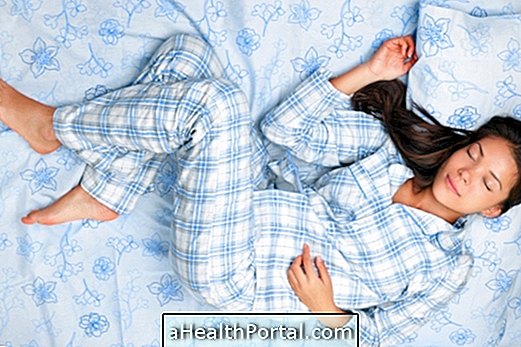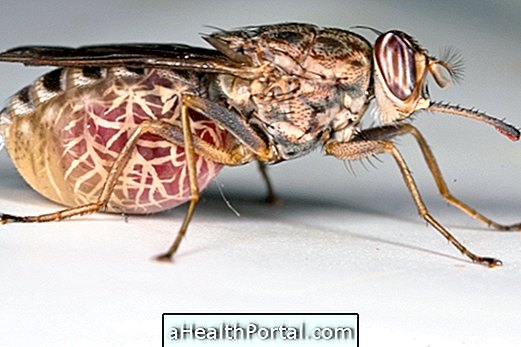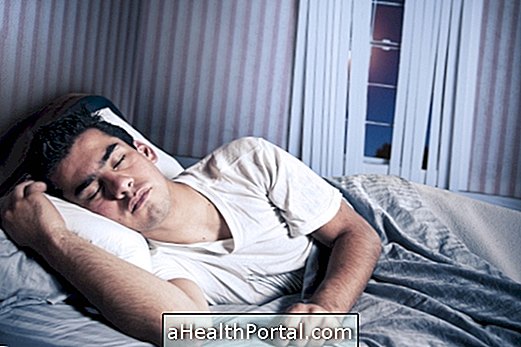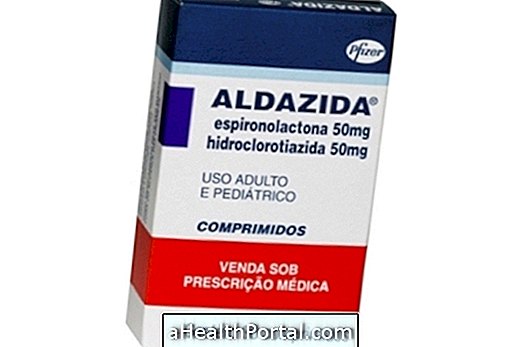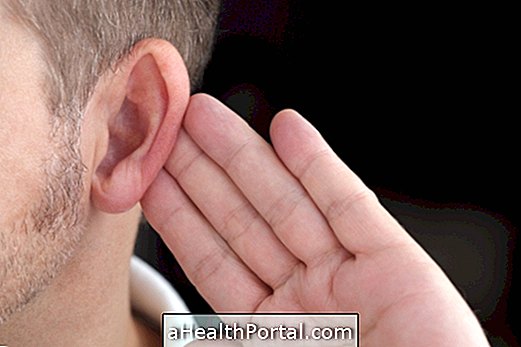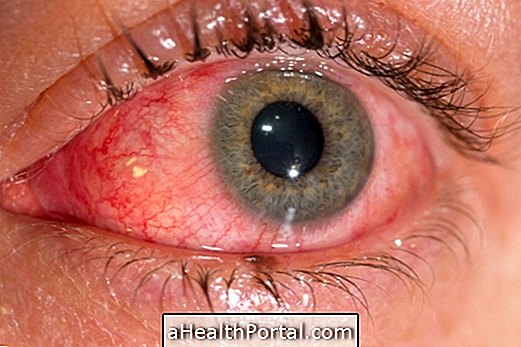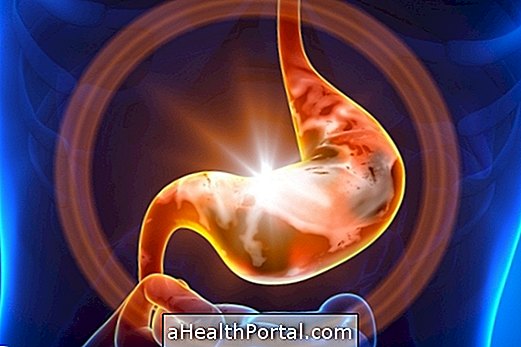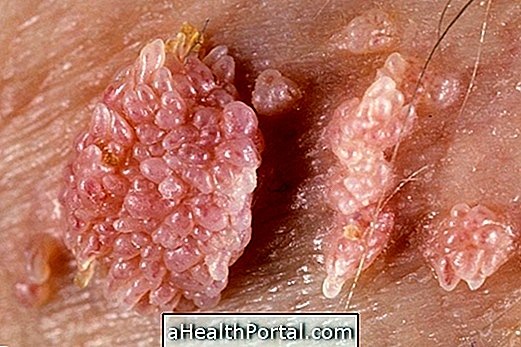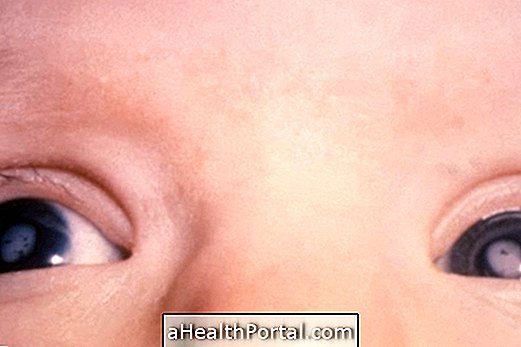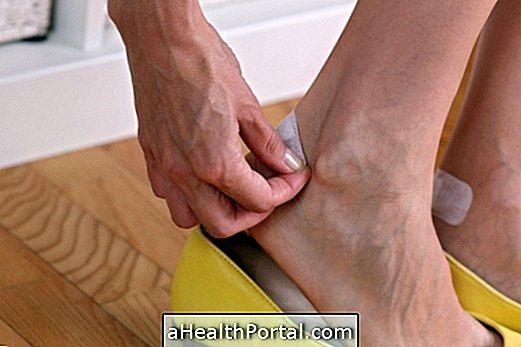Obstructive sleep apnea is a disorder that causes momentary stopping of breathing or very shallow breathing during sleep, resulting in snoring and a restless rest that does not allow the recovery of energy. Thus, in addition to drowsiness during the day, this disease causes symptoms such as difficulty concentrating, headache, irritability and even impotence.
Sleep apnea occurs due to airway obstruction due to dysregulation of the pharyngeal muscles. In addition, there are lifestyle habits that increase the risk of developing obstructive sleep apnea, such as being overweight, drinking alcohol, smoking, and using sleeping pills.
This sleep disorder should be treated by improving living habits and using an oxygen mask that pushes air into the airways and facilitates breathing.
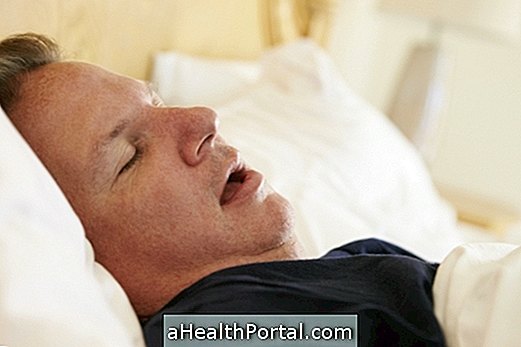
How to identify
To identify obstructive sleep apnea, the following symptoms should be noted:
- Snoring during sleep;
- Waking up several times at night, even for a few seconds and in an inconspicuous manner;
- Present stops of breathing or suffocation during sleep;
- Having excessive sleep and tiredness during the day;
- Waking up to urinate or losing urine during sleep;
- Having a headache in the morning;
- Decrease income in studies or work;
- Have changes in concentration and memory;
- Develop irritability and depression;
- Have sexual impotence.
This disease happens due to a narrowing in the respiratory tract, the nose and throat region, which is mainly due to a deregulation in the activity of the muscles of the throat region called pharynx, which may be excessively relaxed or narrowed during breathing. The treatment is done by the pulmonologist, who may indicate a device called CPAP or, in some cases, surgery.
It is more common in people over 50 years of age, and the amount and intensity of symptoms varies according to the severity of the apnea, which is influenced by factors such as overweight and anatomy of the person's airway, for example.
See also other diseases that cause excessive sleep and tiredness.
Types of Sleep Apnea
There are 3 main types of sleep apnea, which can be:
- Obstructive sleep apnea : Occurs in most cases due to obstruction of the airways, caused by relaxation of breathing muscles, narrowing and changes in the anatomy of the neck, nose or jaw.
- Central sleep apnea : usually occurs after some disease that causes brain damage and alters its ability to regulate respiratory effort during sleep, such as in cases of brain tumor, post-stroke or degenerative brain diseases, for example;
- Mixed apnea : it is caused by the presence of both obstructive apnea and central apnea, being the rarest type.
There are also cases of temporary apnea, which can happen in people with inflammation of the tonsils, tumor or polyps in the region, for example, that can hinder the passage of air during breathing.

How to confirm the diagnosis
The definitive diagnosis of sleep apnea syndrome is made by Polysomnography, which examines sleep quality by measuring brain waves, breathing muscle movements, the amount of air entering and exiting during breathing, besides the amount of oxygen in the blood. This test is used to identify both apnea and other diseases that interfere with sleep. Learn more about how polysomnography is done.
In addition, the doctor will make an assessment of the history and physical examination of the person's lungs, face, throat and neck, which may also help differentiate between types of apnea.
How to treat
To treat sleep apnea, there are some alternatives:
- CPAP is an oxygen mask-like device that pushes air into the airways and facilitates breathing and improves sleep quality. It is the main treatment for sleep apnea.
- Surgery : It is done in patients who do not improve with the use of CPAP, which can be a form of apnea cure, with the correction of airway narrowing or obstruction in the airways, correction of deformities in the mandible or placement of implants.
- Correction of lifestyle habits : It is important to leave habits that may be worsening or triggering sleep apnea, such as smoking or ingesting substances that cause sedation, in addition to being very important to lose weight.
Signs of improvement may take a few weeks to get noticed, but one can already see the decrease in tiredness throughout the day due to more restorative sleep. Learn more about treatment for sleep apnea.
The treatment of sleep apnea is important because, in addition to decreasing the amount of snoring and annoying people around, it also prevents the onset of complications and illnesses triggered by this disorder, such as: hypertension, type 2 diabetes, heart failure, arrhythmia, infarction and stroke.
It is also possible to treat sleep apnea by simple and natural measures, such as not taking sleeping pills and doing regular physical activity so that weight is maintained and there is improvement in the passage of air, reducing snoring and feeling of shortness of breath. Check out 3 natural options for treating sleep apnea.


